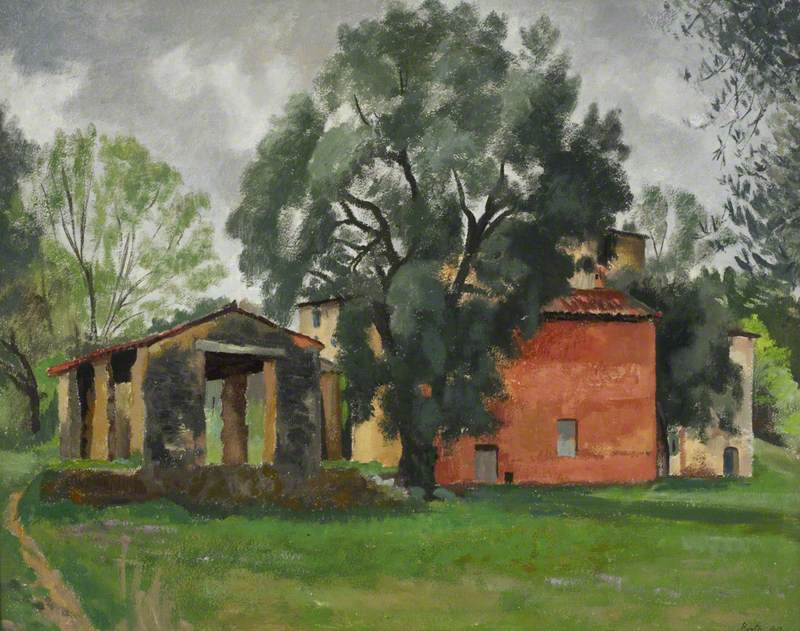
Josef Bato (1888–1966)
The Royal Borough of Kensington and Chelsea Culture Service, Leighton House Museum
Joseph Bato [also known as Josef Bato] was born József Bató was born to a Jewish family in Budapest, Austria-Hungary [now Hungary] on 15 October 1888, and studied at the School of Applied Arts in Budapest. In 1907 he went to Paris where he received lessons from Henri Matisse and Georges Desvallièrs. Following his return to Budapest he attended the Hungarian Academy of Fine Arts from 1909 to 1912. He then moved to Berlin where his career as an artist took off. He began working as a painter and muralist. He also joined the Berliner Sezession group. With the outbreak of World War One in 1914 he went back to Budapest. During the war he served in the Army on the Russian Front and was an official Austro-Hungarian war artist. After the war Bato returned to Berlin.
In 1936, in order to avoid Nazi persecution, he fled Berlin and settled in London where he continued his career as an artist. During World War Two he participated in a number of exhibitions including the Exhibition of the Works of British War Artists, organised by The Artists' International Association at Charing Cross Underground Station in London in September 1941, and the exhibition of work by British War Artists held at Cheltenham School of Art in Cheltenham, Gloucestershire in November 1941.
Bato became dissatisfied with the reception of his work as an artist and in the early 1940s switched careers. He subsequently worked as a film set and costume designer. At the recommendation of fellow Hungarian émigré, the renowned film director Alexander Korda, Bato obtained the position of costume designer on the Powell and Pressburger film The Life and Death of Colonel Blimp (1943) and following the war he worked as art director for London Films, a film production company founded by Korda. Among the 25 films with which he was associated were An Inspector Calls, The Belles of St Trinian's and The Third Man.
Later in his life Bato went back to painting. He also wrote a novel, The Sorcerer, published posthumously in 1976. He died in London on 21 May 1966. His address at the time of his death was 10 Pembridge Crescent, London.
Text source: Art History Research net (AHR net)
Text source: Art History Research net (AHR net)
